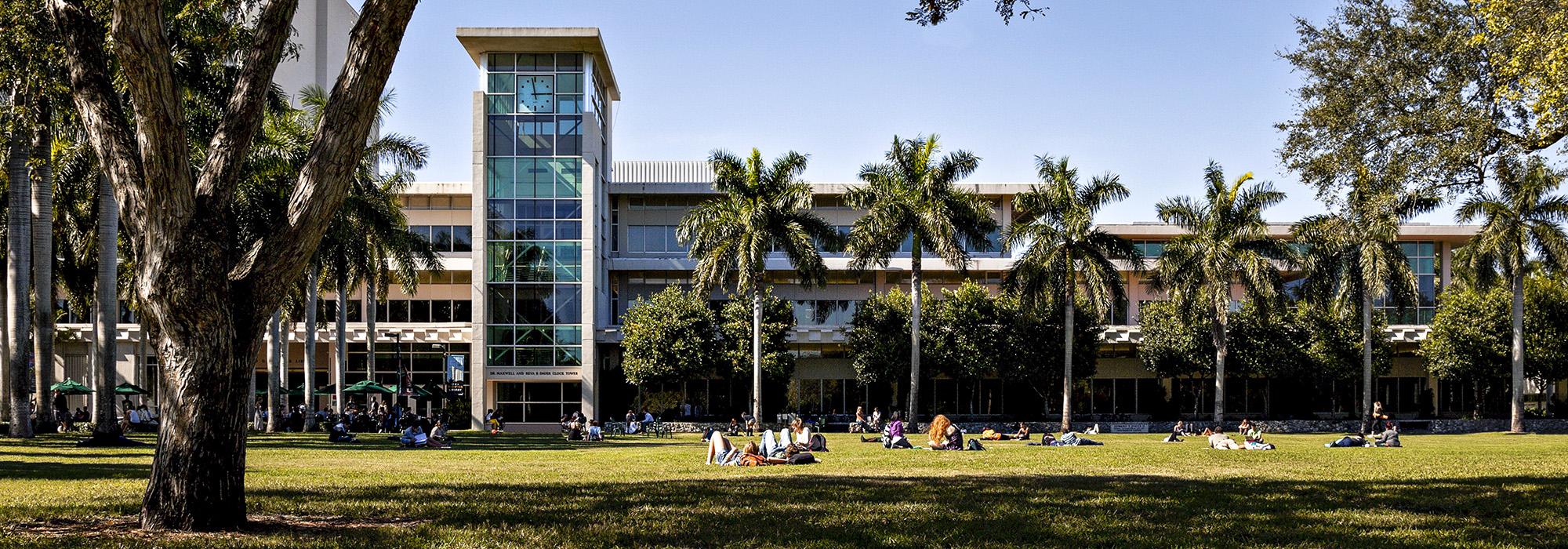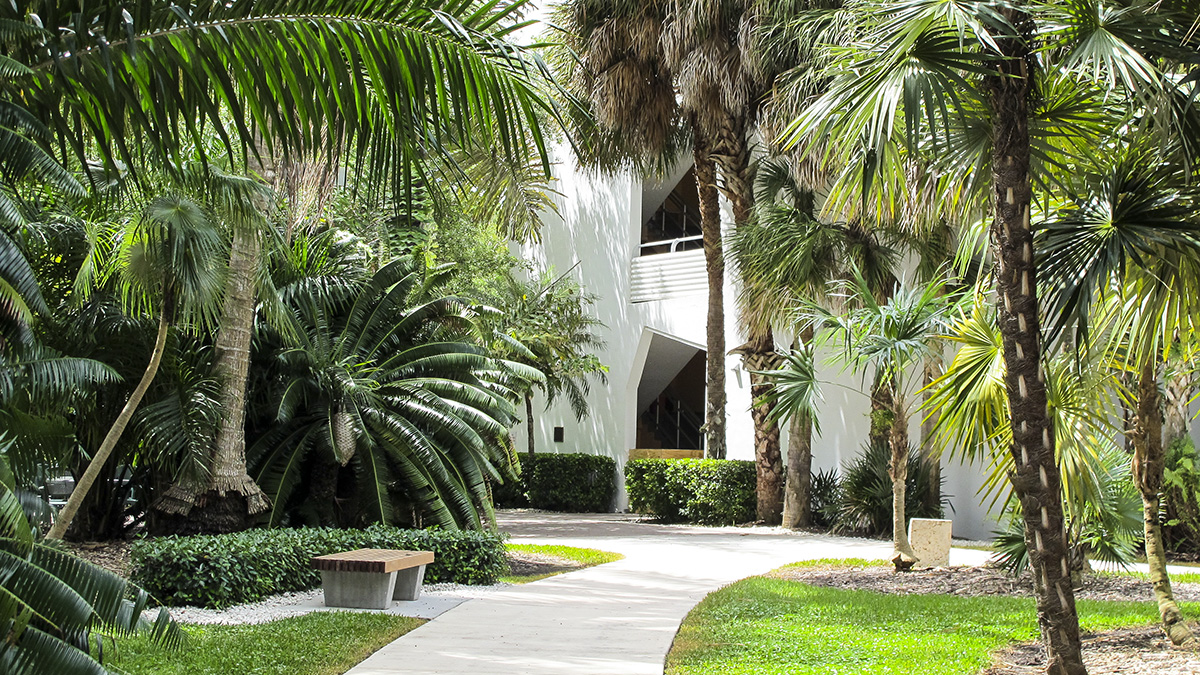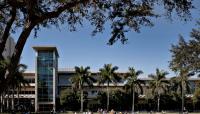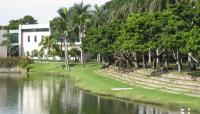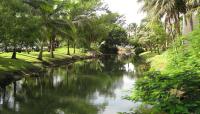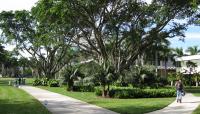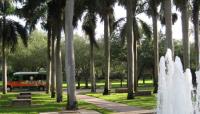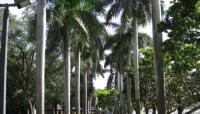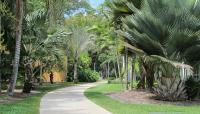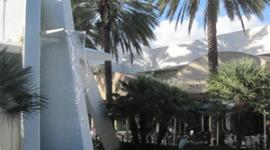Chartered a year before the 1926 hurricane that ushered the collapse of the Florida land boom, this campus began as a 160-acre donation of land by George Merrick, developer of Coral Gables. The site was chosen for its natural vegetation, the centrally located 8.5-acre Lake Osceola, and the picturesque canal that connected the lake to Biscayne Bay. In keeping with Merrick’s vision for Coral Gables, a master plan influenced by Mediterranean architecture and landscape design that would employ abundant massings of subtropical plants was developed but never realized. Though the cornerstone of its first building was laid in 1926, campus construction was halted until after World War II.
Twenty years after the initial construction, architects Marion Manley, Robert Law Weed, and Robert M. Little designed a Modernist master plan for the campus in 1947. Asymmetrical blocks of long, narrow buildings painted in primary colors were sited to take advantage of open, airy green spaces offset by a minimal, abstracted landscape. Palms demarcated perimeters and reinforced axial paths while dense understory and groundcover created a garden-like setting for outdoor study spaces.
Today, the campus has grown to 260 acres including the three-acre John C. Gifford Arboretum, a Florida Keys arboretum on the lakeshore, and a palmetum on the western edge. The historic core of the campus is encircled by recreational fields, parking lots, and more robust architectural blocks capable of withstanding hurricanes. In 2009 Cooper, Robertson & Partners and Nelson Byrd Woltz completed a master plan to unite the Modernist campus, Mediterranean landscape, and guide future growth.



